How to Write a Novel – The Definitive Guide
How to write a novel- The Definitive Guide
Do you have loads of interesting stories to tell and a way with words? If so, you’ve already crossed two of the biggest hurdles on your road to becoming an author. If you’re passionate about writing a novel, don’t just jump the gun and start putting pen to paper.
Take your time and educate yourself on how to write a novel.
Many elements go into making a really good book; for starters, we are going to focus on the biggest element of them. If you enjoy ideating, you may have already figured out what to write, but the challenge lies in how to write a novel.
Writing, by itself, is an art form that requires constant practice, even if you have a flair for it. From creating a unique plot line to penning a mind-boggling climax, there are many aspects involved in writing a fiction novel.
Once you have learned how to write a novel, other things like editing the final draft, designing the cover, and promoting the book will become a challenge you will enjoy taking. Here are some tips that will help you start writing the novel.
- What is a novel?
- Genres of a novel
- Understanding the structure of a novel
- Understanding characterization
- Point of View of your novel
- The Novel length
- Choose a topic and genre for your novel
- Start with the story idea
- Outline your story
- Create a complex and unpredictable plot
- Write the first chapter of your novel
- Flesh out the rest of your story
- Write in scenes rather than in long blocks of text
- Create interesting and believable characters
- Give your characters interesting goals and motivations
- Telling vs Showing
- Make effective use of dialogues
- Employ literary devices for added effect
- Pay attention to pacing
- Avoid info dumps
- Write a compelling middle part of the book
- The art of a perfect ending
- Edit your novel
- Get feedback from others
- Publish your novel
- Market and promote your book
What is a novel?
Before we can discuss literary qualities, we need to first establish what a novel is and how to write a novel. A novel is a long work of fiction, typically over 200 pages, that tells a story. It can be about anything, from love to war to coming of age. One of the most important aspects is that it is a journey – both for the characters and for the reader. The characters must undergo some sort of change or growth throughout the novel, and the reader should feel like they have learned something by the end. So how does one write a novel?
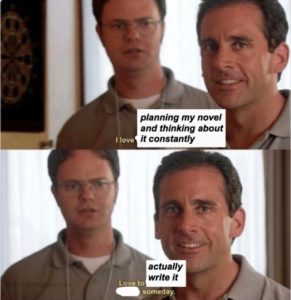
There is no single answer to this question, as every author has their process. However, there are certain elements that all successful novels share. First and foremost, the novel must have compelling characters that readers can invest in.
The plot should be tightly woven, with each scene moving the story forward in some way. And finally, the novel should say something meaningful about the human experience. Whether you’re writing a sweeping epic or an intimate character study, these are the qualities that will make your novel resonate with readers long after they’ve turned the last page.
Genres of a novel
You can write a novel in different genres. The most popular ones are romance, mystery, and thriller. Each genre has different requirements and a different way of writing.
For example, in a romance novel, the focus is on the developing relationship between the two main characters. It often has a happy ending, with the characters getting married or living happily ever after.
In a mystery novel, the focus is on solving a crime. The novel often starts with a crime being committed, and the protagonist spends the rest of the novel trying to figure out who did it.
In a thriller novel, the focus is on suspense and excitement. The novel often features fast-paced action and suspenseful scenes that keep the reader guessing what will happen next.
These are just some of the different genres in which a novel can be written. There is no one way to write a novel, and different writers will have different preferences for which genre they prefer to write in. However, knowing the different genres and what they entail can help you to decide which type of novel you would like to write.
Understanding the structure of a novel
You have created the heart of your story and expanded it. Now it’s time to flesh it out. Lay the framework and see how you’re going to move from point A to point B.
This is where knowing the genre of your book comes in handy. Now, this is never going to be set in stone. You could start with a drama and launch into a thriller depending on where imagination takes you. But knowing the genre you’re aiming for helps guide you. It gives you something to aim for and stick to if you veer too far off track.
Your story could be about a murder, but you can still make it a funny novel. On the other hand, you can also write a horror movie with a romantic backdrop.
Also, do not choose a style just because it seems fancy or intriguing. One of the biggest mistakes many writers make is choosing the wrong genre. If you have written short stories in the past, you might by now, know which genre you are good at. Pick a genre that you’re comfortable with, especially if it’s your first novel.
Some authors have even won the Booker Prize for their debut novels. They made their novels a success by writing a genuinely intriguing and exciting stories, especially in the genre they are good at.
Need a detailed study on writing specific novel genres? Read our guides on how to write a horror novel and how to write an adventure novel.
Understanding characterization
This is the most crucial but often ignored aspect of novel writing. Readers prefer to read novels that make them feel a connection with the story. Even if you are writing fiction or fantasy, people would love it if they could relate to your characters.
That being said, the characters shouldn’t feel confusing. Therefore, before even writing your first chapter, create a character map. Jot down the name and the primary characteristics of every important character.
Note that everything from their eye color to their hobbies, how they act in a particular situation to their pet peeves. This way, you will be clear about every character. This list will help define every character. Read our guide on how to create and understand your characters.
Point of View of your novel
Once you have decided on the characterization, story, and genre, you must decide how it is going to be written. This is different from the structure as it is through whose eyes the reader will explore the book’s world. It controls how your structure is shaped.
There are six basic types of points of view:
First-person:
This is when the story is written from the perspective of one of the protagonists.
First-person peripheral:
This is when the narrator of the story is a supporting character in the novel and not one of the protagonists. This way, the narration still uses “I” but some scenes will happen to the protagonist and the narrator will not have access to those events.
Second person:
The story will be told from your perspective. This is mostly used in non-fiction and self-help books.
Third-person limited:
The story is told from a third-person’s perspective, but the narrator’s knowledge of events is limited to that of one of the characters. In simple terms, the narrator will tell the readers only what one of the characters knows. This kind of point of view works well for thriller novels.
The third person multiple:
The story is told in a third-person point of view, but the narrator moves from one character to another. In short, the narrator tells us from the view of more than one character.
Third-person omniscient:
The narrator knows and shares everything. It’s more like voice-overs in movies. The narrator says plenty of things about the characters that the character themselves won’t know. This works well with romantic novels.
You must study, understand, and choose your point of view before starting. Don’t wait till editing to follow a proper point of view. A good novel is something that has clear narration. A recent trend is to write in the first person multiple.
Before writing the novel, another thing that you must finalize is the tense in which it is written. Most stories are written in either past or present tense. Very rarely is a future tense used? No matter which tense you choose, it’s important to maintain consistency in the tense used. Editing errors in tense can be a very daunting task.
The Novel length
Have a rough word count that you want to hit when you finish the novel. Most novels are somewhere around 70,000 words. If your story demands it, you can consider stretching it by another 30,000-35,000 words. Similarly, there are excellent novels that are short and crisp at maybe, 50,000 words. Depending on your genre and writing style, have an upper and lower limit set.
Choose a topic and genre for your novel
As you go about how to write a novel, you might feel overwhelmed by the task ahead of you. After all, writing a novel is a sizable undertaking, and it can be difficult to know where to start. Answering the question of how to write a novel involves breaking down the many steps involved. A primary step is to choose a topic and genre when you navigate how to write a novel.
First, take some time to think about the kind of story you want to tell. What topics do you want to write on? What themes do you want to tackle? Once you have a general idea of the kind of story you want to write, you can start narrowing down your options.
Next, consider the genre or genres you want to write your novel in. Are you interested in writing a mystery? A romance? A historical fiction? Once you have an idea of the genre or genres you’re interested in, you can start doing some research to find out more about what’s involved in writing a novel in that genre.
Finally, once you’ve chosen a topic and genre, it’s time to start planning how to write a novel and get started.
Start with the story idea
When you look at how to write a novel, you have a story in mind. A two-liner is enough to create a bestseller, provided you know how to build an interesting piece from the simple plot line. Transform your two-line story into a four-liner by giving it context.
For example, if your two-line story is “Seven people take a tour to Jim Corbett. One after another, they start disappearing.” Build on it like this-“Seven people take a tour to Jim Corbett. Each of them hides something from the rest. One after another, they start to die. They start to suspect each other.”

Go on, and on until you reach a point, where you are clear on how the story is going to unfold. You can build your foundation and structure this way.
Outline your story
Any outline is only as good as its weakest link, so don’t skimp on the outline just because it’s “only” the outline. A strong outline will save you time and energy when it comes to writing your novel, so it’s worth taking the time to create a quality outline.
Steps to outline your novel
There are many different ways to outline the novel, but one of the most effective methods is to create a scene-by-scene outline. This type of outline allows you to map out the major events in your story and ensure that each scene is moving the plot forward.
To create a scene-by-scene outline, start by brainstorming a list of all the important scenes in your story. Once you have a list of scenes, start writing a brief description of each one. Include key information such as who is in the scene, what happens, and why it’s important to the story. With this information in hand, you’ll be able to craft detailed and interesting scenes that move the plot forward and keep readers engaged.
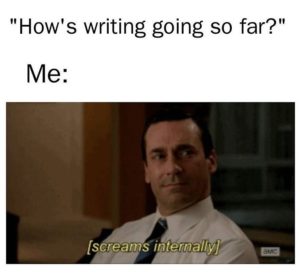
Create a complex and unpredictable plot
A plot is the backbone of any story, and making it engaging and complex is essential to keep readers hooked. There are a few key elements that go into creating a plot that is both engaging and complex.
First, you need to make sure that your story has a clear conflict. Without a conflict, there is no tension or suspense, and readers will quickly lose interest. Second, you need to introduce multiple complications and secondary conflicts throughout. These complications will keep readers guessing and heighten the tension as they try to figure out how everything will resolve.

Finally, you need to make sure that your ending is both unpredictable and satisfying. If readers can see the ending coming from a mile away, they will be disappointed. However, if the ending is too shocking or convoluted, it will also be turned off. Striking the right balance is essential to creating a plot that will keep readers engaged until the very end.
Write the first chapter of your novel
The first chapter of your novel is crucial to hooking your reader and keeping them engaged. Here are some tips on how to write an intriguing opening act:
- Start with action. Whether it’s a pulse-pounding battle scene or a quiet moment of reflection, you want to immediately engage your reader and establish the tone of your story.
- Introduce your protagonist. Readers need to connect with your main character, so make sure to introduce them in a way that showcases their personality and drive.
- Establish the setting. Where is your story taking place? Is it a bustling metropolis or a remote, dangerous jungle? Give your readers enough detail to immerse them in the world of your story.
As you can see, there’s a lot that goes into writing a first chapter that will grab readers’ attention and keep them coming back for more. But with careful planning and execution, you can craft an opening act that will set the stage for an amazing novel.
Flesh out the rest of your story
Any good novel starts with a strong opening chapter that sets the stage for the story to come. But once you’ve written that first chapter, you may be wondering how to flesh out the rest of the story. Here are a few tips to help you write a novel that is both engaging and memorable.
First, make sure your characters are well-developed and relatable. Readers need to be able to connect with their characters to remain invested. Give your characters flaws and weaknesses, as well as strengths and moments of courage. This will make them feel more real and three-dimensional.
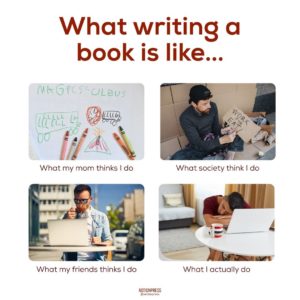
Second, don’t be afraid to experiment with different storytelling techniques. If you’re not sure where the story is going, try writing from multiple points of view or using flashbacks to fill in the back story. This can help to add depth and richness to the novel.
Finally, keep the momentum going by ending each chapter with a cliffhanger or some other type of suspenseful moment. This will leave readers eager to find out what happens next, and ensure that they keep turning the pages. By following these tips, you can clearly understand how to write a novel that is both captivating and unforgettable.
Write in scenes rather than in long blocks of text
One of the benefits of writing in scenes is that it can help to create a natural flow in your writing. Rather than writing long blocks of text, scene writing can help to break up the narrative and make it more readable. It can also be helpful in terms of plotting and pacing, as you can map out each scene in advance and plan how it will fit into the overall story arc.
In addition, writing scenes can help you to focus on specific aspects of your characters and their situations, making for richer and more detailed writing. Ultimately, deciding whether or not to write in scenes is a matter of personal preference.
However, if you find yourself struggling with writing long passages of text, scene writing may be worth exploring as a way to improve your writing.
Create interesting and believable characters
Believable characters are the cornerstone of any good story. Without believable characters, the story will fall flat and the reader will quickly lose interest. So how do you create believable characters? One important thing to remember is that your characters should be more than just a collection of traits. They should be fully developed individuals with their hopes, dreams, and motivations.
Give your characters flaws and strengths, and make sure that their actions are consistent with their personalities. It’s also important to ensure that your characters are well-rounded. In other words, they should have hobbies, interests, and opinions outside of the central conflict.

And finally, don’t be afraid to use real-life examples to inspire your writing. After all, the best fiction is often grounded in reality. By following these tips, you can create believable characters that will keep your readers engaged from beginning to end.
Give your characters interesting goals and motivations
interesting goals and motivations are essential for creating interesting characters. Without interesting goals and motivations, your characters will be flat. So how do you create interesting goals and motivations for your characters?
One way is to make sure that your goals and motivations are specific and unique to each character. Generic goals like “become wealthy” or “find true love” are not nearly as interesting as goals that are tailored to a specific character’s history, personality, and circumstances.
It’s also important to make sure that your goals and motivations are believable. If a goal or motivation seems contrived or far-fetched, it will break the reader’s immersion in your story.
Finally, interesting goals and motivations should be complex. A character who is driven by a single goal or motivation is often one-dimensional. Characters who have multiple goals and motivations, on the other hand, can be much more compelling.
By keeping these things in mind, you can ensure that your characters have interesting goals and motivations that will keep your story interesting.
Telling vs. Showing
More than once you would have come across people talking about telling vs. showing. If you are wondering what it’s all about, read on.
A common mistake that many debut writers make is to tell the reader the events of a story or how a character is feeling rather than showing it.
In report writing, article writing, and journalism, telling a story works. However, when it comes to writing a book, especially if it is fiction, creating the illusion of being there in the story is what people prefer. Seeing events happen is what many readers want from a book.
For example, when we read the Harry Potter series, we felt like we were right next to the boy wizard. That’s the magic of the book!
Make effective use of dialogues
The importance of effective dialogue cannot be overstated. Good dialogue can make for an engaging read and can help to develop the characters and plot. However, writing effective dialogue is not always easy. Here are some tips to help you get started:

- Keep it simple. The best dialogues are those that are direct and to the point. Avoid overly complex sentence structures, and don’t try to be too clever with your words.
- Be lyrical. Effective dialogues should have a poetic quality to them. They should flow smoothly, and use language that is both beautiful and evocative.
- Use dialogue to add drama. Dialogues should be used to further the plot and reveal important information about the characters. They should be tense, and full of conflict or tension.
By following these tips, you can start to write effective dialogues that will engage and entertain your readers.
Employ literary devices for added effect
Literary devices are tools used by writers to create effective arguments and add intrigue, or drama to their writing. By employing literary devices, writers can more effectively persuade their readers, keep them engaged, or even surprise them. Some common literary devices include metaphors, similes, and allegories.
While literary devices can be used in any type of writing, they are particularly important in fiction writing, as they can help to bring the novel to life and make it more enjoyable to read. When used effectively, literary devices can make your novel more enjoyable to read and can even help to sell more copies.
However, it is important to use literary devices sparingly and only when they will have the desired effect. Overusing literary devices can result in your novel is difficult to read or understand.
Therefore, it is important to use literary devices judiciously and only when they will add value to your novel.
Pay attention to pacing
Pacing is one of the most important aspects. It’s what keeps readers engaged and turning the pages. Good pacing can make a mediocre story into an engaging read, while bad pacing can make even the best story seem boring.
There are a few things to keep in mind when pacing a novel. First, remember that pacing is not just about how fast or slow the story is moving. It’s also about adding drama and suspense.
Just as you wouldn’t want to watch a movie that was all action with no story, you also don’t want to read a work that is nothing but filler. There needs to be a balance between action and story to keep readers engaged.
Another thing to keep in mind is that pacing can vary from scene to scene. Some scenes may be fast-paced, while others may be slow and introspective. That’s okay! Just make sure that each scene is serving a purpose and moving the story forward in some way.
Paying attention to pacing is one of the best ways to ensure an engaging read. By keeping these things in mind, you can make sure your novel has the perfect pacing for your story.
Avoid info dumps
Info dumps can be a real drag on a novel. Not only are they boring to read, but they can also give away too much information too soon, killing the suspense and making the story feel predictable. However, there are ways to avoid info dumps and still keep the reader informed.
One way is to introduce the information gradually, through dialogue, actions, and thoughts. This allows the reader to learn about the world as the characters do, making for a more interesting and intriguing read.
Another way to avoid info dumps is to focus on the drama, rather than the information itself. After all, what readers want is an interesting story, not a lecture on the history of your made-up world. So, next time you’re tempted to dump a bunch of info on your poor readers, take a step back and ask yourself if there’s a more interesting way of storytelling.
Write a compelling middle part of the book
The middle part of the book is often the most challenging for authors. Not only do you have to keep the reader engaged, but you also have to advance the plot and build up to the climax. This can be a lot of pressure, but there are a few things you can do to make sure your middle part is as compelling as possible.
First, make sure you have a clear idea of what happens in the second act. What is the main conflict that needs to be resolved? What are the key turning points? Once you have a good understanding of the structure of your story, you can start to fill in the details.
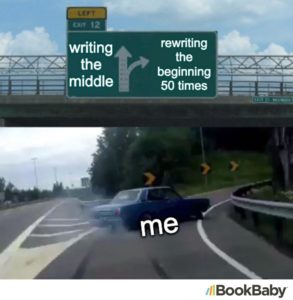
Remember to include plenty of action and suspense, and don’t be afraid to introduce new characters or subplots if they add to the story. With a little planning and effort, you can make sure your middle part is just as engaging as the rest of your book.
The art of a perfect ending
The art of climax and resolution is crucial in any book. The resolution is the final part where all the plot threads are tied up and the reader is left with a sense of closure. The climax, on the other hand, is the moment of highest tension in the story where everything comes to a head.
While it is important to have both a climax and a resolution, it is often the climax that readers remember most. Therefore, it is essential to make sure that the ending of a book is satisfying and leaves the reader wanting more.

Several things need to be considered when creating the perfect ending. First, all loose ends must be tied up. Secondly, the climax should be impactful and memorable.
And finally, the resolution should be realistic and leave the reader with a sense of hope. With these factors in mind, it is possible to craft an ending that will stay with readers long after they have finished the book.
Edit your novel
Novel editing is an essential part of the writing process. It’s the time when you take a step back and examine your work with a critical eye, looking for ways to improve it.
The editing process can involve much more than simply correcting typos and grammatical errors. It’s also an opportunity to rewrite and rearrange scenes, tighten up your prose, and strengthen your characters. In short, editing helps you to craft a better story.
Steps involved in editing your novel
There are many different steps involved in editing a novel. Perhaps the most important is simply taking the time to read through your work carefully, making note of any areas that need improvement. Next, you might want to focus on specific aspects of your story, such as plot holes or underdeveloped characters.

Once you’ve identified the areas that need work, it’s time to start making changes. This might involve rewriting entire scenes or simply making small tweaks to the wording of your prose. Finally, once you’re happy with the overall structure of your story, it’s time to polish it up by attending to the smaller details like grammar and punctuation.
By following these steps, you can ensure that your novel is the best it can be. Whether you’re aiming for publication or simply want to create a story that you’re proud of, editing is essential. So don’t be afraid to take your time with it and make whatever changes are necessary to create a truly great story.
Get feedback from others
When you’re working on a novel, it’s important to get feedback from others. This feedback can help you to improve your novel in several ways. First, it can help you to identify areas where you need to make changes. Second, it can help you to understand how readers are responding to your work.
And third, it can help you to fine-tune your novel so that it’s the best it can be. Of course, not all feedback is equally useful. It’s important to seek out constructive criticism that will help you to improve your novel.

But if you’re open to feedback and willing to embrace constructive criticism, getting feedback from others can be an invaluable tool in making your novel the best it can be.
Publish your novel
Anyone with a story to tell can write a novel, but getting that novel published is another matter entirely. For aspiring authors, the process of publishing a book can seem daunting and overwhelming. Once you have a finished product, the next step is to find an agent or publisher who is willing to take a chance on your work.
This can be difficult, as the publishing industry is highly competitive. However, there are several resources available to help you find the right fit for your book.
With the advent of the internet, self-publishing is easier than ever before. There are several ways to go about it, but self-publishing is often the most advantageous route for aspiring authors.
Not only does it allow you to retain creative control over your work, but it also allows you to reach a wider audience than you would if you went the traditional publishing route.
Notion Press offers self-publishing services to authors and strives to democratize the sphere of publishing. Every story finds its voice with Notion Press. Aspiring authors can avail of valuable services from Notion Press including formatting their book, designing covers, distribution, and sales.
Market and promote your book
After you’ve published your book, the next step is to make sure it reaches its potential by promoting and marketing it effectively. While there are several ways to do this, it’s important to tailor your approach to your target audience.
For example, if you’re writing a book for young adults, you’ll want to focus on promoting and marketing your book through channels that reach this demographic, such as social media, book festivals, and school visits.
Whatever approach you take, the key is to be strategic and purposeful in your efforts. By following these steps, you’ll give it the best chance possible to reach its potential and find success.
Writing a novel is a journey, and the best way to enjoy the ride is to keep moving forward, one word at a time. Thanks for joining me on this adventure, and I can’t wait to see what you come up with!

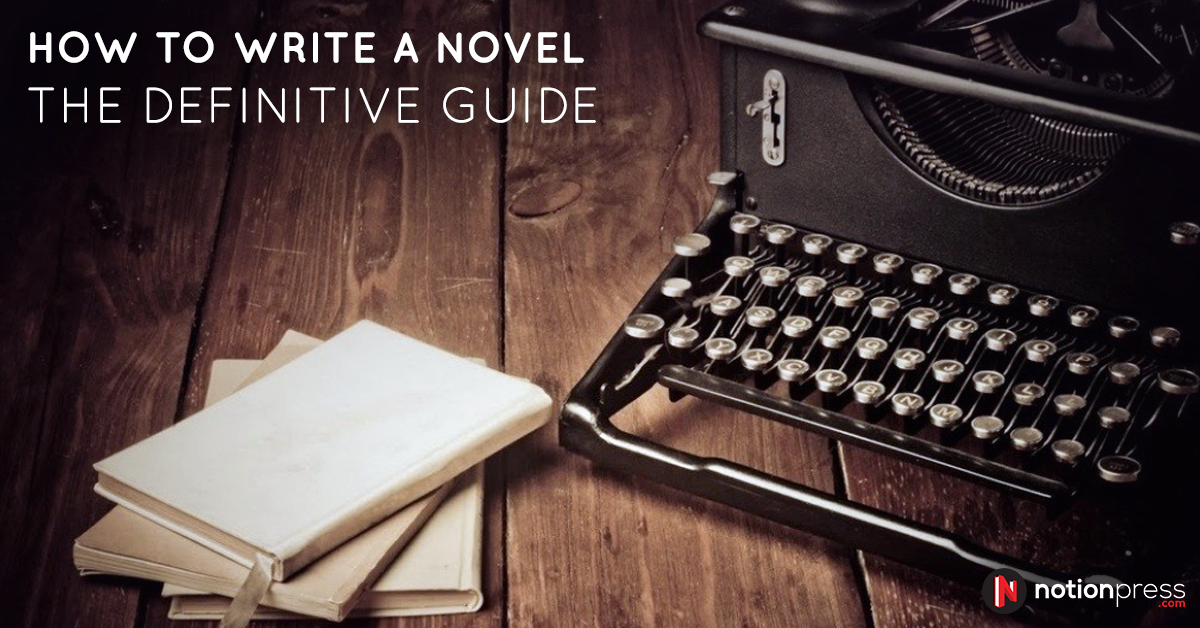





Pingback: How to Write a Novel - The Definitive Guide | P...()